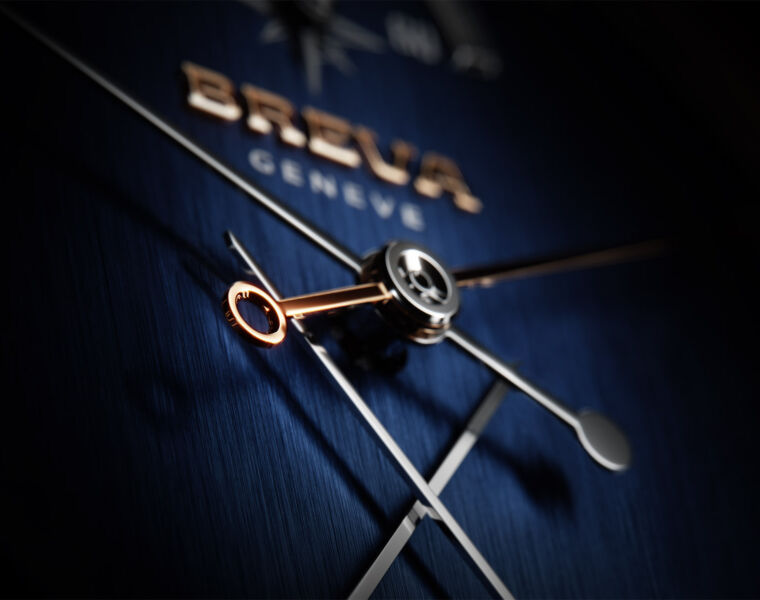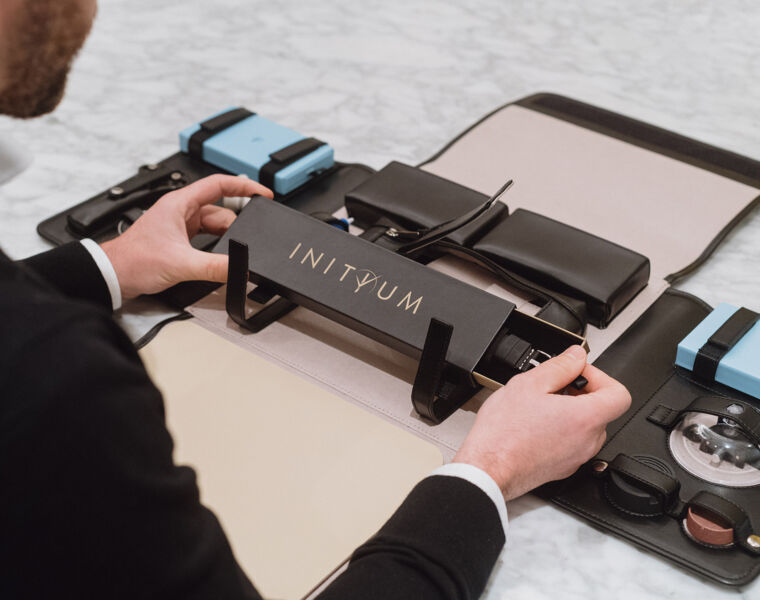
Jack Row: As a British craftsperson and designer, my foremost aim is to produce innovative, beautiful and extraordinary products, which are of the uppermost quality in both materials and design. I take great pride in the knowledge that the pieces I design and make will be valued as works of art, as much as functional items, to be passed down from generation to generation.
Luxurious Magazine Founder Paul Godbold, conducts an interview with British Jeweller Jack Row about his passion for creating exquisite writing implements, his early life, the building of the Jack Row Brand and his future goals.

THE JACK ROW INTERVIEW
PG: Jack, as you know, I’ve lived in the same part of the world as you grew up in, and it is not an area that you would automatically link to high-value products that subsequently lead to one of the most famous department stores in the World. Before becoming one of the bright young stars from the jewellery world, what was life like growing up for ‘Young Jack’ in Nottinghamshire and where did the fascination for jewellery come from?
JR: When most people think of Nottingham, they inevitably conjure up images of Robin Hood, Sherwood Forest and Kevin Costner. However, there is more to the Midlands town than the Hollywood perception would have you believe. Art; design and craftsmanship are significant parts of its heritage, the most famous contemporary export being the world-renowned fashion designer, Paul Smith.
Growing up in Nottingham, I think that the history and culture of the city had a profound effect on my interest in art and design and in some way sowed the seeds of my creativity. From an early age, my father (who is a carpenter) would take me at least every month to the museum and art galleries at Nottingham Castle to see the latest exhibitions and installations. Andy Warhol one month, Wedgwood the next and works by Pre-Raphaelite masters the following. It was perhaps inevitable that my eventual career would lie in the creative arts. My introduction into the world of jewellery and more importantly, goldsmithing, came by a rather unexpected route; via the Japanese sport of Judo. I had no idea that one of my training partners was an award-winning master goldsmith who had made pieces of jewellery for the Royal Family.
Harry Forster-Stringer, the man in question, knew that I had an interest in art and design and suggested that I could apply for a part-time job at his gallery and studio. I never really looked back from the first moment that I saw the intricate, hand-made works of art that Harry and his team were creating from silver, gold, diamonds and an array of precious stones. The skill and creativity that goldsmithing offered captured my imagination at the age of 16, and I knew that this was the path I must take and began a part-time apprenticeship alongside my academic studies.
PG: Tell us about the move to Birmingham, what skills you ‘Honed’ and how the introduction to Harrods came about.
JR: After completion my A-Levels at 18, I worked full-time as a goldsmith for a year and finished my apprenticeship. The decision then arose whether to either stay and work with Harry’s team, or continue my education at an academic institution. Although my making skills were good, I wanted to improve my ability and wider understanding of design and also master new practices such as computer-aided design and laser technology.
After visiting various institutions around the UK I settled upon the world-renowned School of Jewellery, part of the Birmingham Institute of Art and Design. The school is the largest of its kind in Europe and has been on its site in Birmingham’s historic Jewellery Quarter since 1889. What drew me to this college was that fact that there was an equal emphasis on craftsmanship as well as design theory, which is sadly lacking in many other universities. Moreover, Birmingham has a strong heritage in art and design, and I thought it would be a vibrant place to study.
I was accepted on to a Higher National Diploma course in Jewellery and Silversmith and then continued for a top-up year on a new degree level course, Design for Industry. I successfully graduated with a 1st class honours degree in 2010 and also won a design award from the British Jewellers Association for All Years and All Courses for my fountain pen prototype, which was developed as a major part of my degree.

Overall, I think that the most significant skills that I acquired and honed whilst studying at the Birmingham School of Jewellery were approaches to design, being open-minded in regard to the combination of old and new technologies and strong entrepreneurial spirit. These are very British qualities that make British design and craftsmanship the most sought after in the world.
The introduction to Harrods was as a part of my major project coursework. I contacted the buyer and asked if it was possible to show him my prototype pen, get his opinion on the design and ask advice about the world of luxury writing instruments, as he is one of the top experts around the world in this field. The results and comments from the meeting were to form part of the analysis of my work, for my dissertation.
The buyer instantly saw potential in the Architect prototype and thought that my story was very ‘Harrods’, with me being a somewhat eccentric British designer, making innovative, luxury products. I was then asked if I would consider developing the prototype into a collection that could be debuted exclusively at Harrods. I said yes (of course), and the rest is, as they say, history!
PG: Thinking back – You’re going to meet the buyer at Harrods, can you recall your emotions, before and after the meeting.
JR: Before the meeting, I was certainly nervous, but also excited about meeting one of the top buyers at the world’s most luxurious department store. After the meeting, I was delighted that Harrods loved my work and also excited about the challenge of developing the concept into a collectable range of writing instruments and accessories and the journey in establishing my luxury brand.
PG: The move to go full-time with the Jack Row brand must have been a daunting one as you were and still are a relatively young man. How has this gone, what’s been the most surprising aspects of running your own company and is/has it been fun?
JR: After graduation, I began employment with one of Europe’s leading bespoke jewellery companies and worked on the development of the Architect collection in the evenings and at weekends. I was fortunate that my employer encouraged me to develop my own creative work and allowed me the time and resources to get my ideas off the ground. My plan was always to be a creative entrepreneur, so I wouldn’t say that going full-time with the Jack Row brand was daunting, so much as more exciting. It was the next logical step through the sequence of events and the move as a young person, if anything, made the decision easier. I have no real commitments to hold me in place and so probably the best time in my life to commence on the journey.

Since launching my brand officially in November 2011, it has certainly been a very busy and hectic time, and I’m learning new things every day, which is great. I’m quite a restless person and find it hard to sit and do nothing when there is so much one could be doing.
It may be an overused cliché But since becoming self-employed and doing what I love, I’ve not worked a single day (maybe put ‘worked’ in quotes to emphasise what you mean?). Whilst tiring and at times stressful, it is definitely fun being creative and exciting having your work appreciated around the world and in top luxury publications after such a short time in business.
PG: The filigree detailing on the Architect collection is incredibly intricate, how do you go about creating the weave pattern and how much time is involved in producing a single writing implement?
JR: The intricate filigree work present in the Architect and also the new Jaali collections begins life on my laptop as a virtual 3d model. This means that I can inspect it from every angle to ensure it is perfect, and check tolerances and stresses. The software that I use to create the models is also used by architects and industrial designers, so is very suited to the forms I tend to create. From there, I send the digital model to a specialist rapid prototyping company which built the parts in a sophisticated photosensitive resin, with an extremely high resolution UV laser. The models are grown through a series of layers from the bottom up, with the laser beam curing one layer at a time, to form a laminate. These layers or slices are only 25microns (0.025mm) thick. This technology is usually used by aerospace and formula-one racing teams to prototype accurate parts, so as you can imagine, it is extremely accurate and the technology itself is very expensive.
Once the resin model is cured, it takes a step back in time a few thousand years, as a replacement for the wax models formed for the traditional craft of lost wax casting. This ancient technology can be seen throughout ancient and modern history. Many of the artefacts unearthed in Tutankhamen’s burial chamber were crafted using this technique, as well as sacrificial goblets created in Shang Dynasty China, around 2000BC.
Essentially, how the process works is that a wax (bee’s wax was used since ancient times) or in my case the resin model, is encased in a liquid, heat sensitive plaster, which is left to set. Once hardened, the plaster, which is contained inside round steel cans, is fired in a kiln for several hours, melting the wax/resin inside, which runs out of gates or feeds, emerging from the bottom of the can.

This leaves a perfect cavity inside the plaster, in the form of the model which it once encased. Then, molten precious metals such as gold, silver or platinum are introduced into the plaster cavity and left to set. In ancient times and still today in many cases; it is simply poured into the plaster; however, I utilise very complex vacuum casting technology, whereby the molten metal is injected into the can under vacuum conditions. This ensures the molten metal fills the cavity with a greater accuracy.
Once the metal is left to cool, the plaster is washed away by pressurised water leaving the raw metal casting behind. Because the plaster has a grain-like texture and the metal boils inside the can, the finished cast is very rough and needs many hours of refining if it is to sparkle.
Once I have the raw casting, I begin the laborious job of refining the surface of the gold or silver, using a combination of the same extremely small hand files as used by Swiss horologists (watch-makers). Then I continue in a series of increasingly fine graded carborundum impregnated paper, which is wrapped around hard wood sticks. For difficult geometry, a fine abrasive Water of Ayr stone is used, which comes only from a single mine on the West Coast of Scotland. After this preparation has been completed, the next stage is to polish the filigree to a brilliant shine. This is achieved with traditional woven cotton mops or wheels, either on small hand motors, as used in dental and medical practices, or on larger fixed motors, which all spin in an anticlockwise direction. A series of specialised polishes is applied to the mops, with the final finishing being achieved with medical grade cotton wool and jeweller’s rouge, which is a combination of ferric (iron) oxide powder and grease. This brings out the beautiful luster of the metal and makes it sparkle.
All these processes, together with the diamond milling of the inner solid sterling silver barrel and the individual setting of precious stones by hand, not to mention the hand making of the oak presentation boxes that accompany all writing instruments, result in a six to eight-week production time to create a single writing instrument, from start to finish.
PG: Give us an insight into your thought process, how do you get the inspiration for a collection? Is it create a pattern and then build a collection around it?
JR: It’s never quite the same twice, but I guess that I begin with a theme or concept, usually something I’ve seen and been inspired by on my travels. I then create a series of mood boards, which are essentially collages of images and or text, relating to the particular subject.
From these, I identify patterns, motifs and possibly emotions which I feel best represent the subject and moreover, that I personally identify with and find aesthetical satisfying.
I then begin sketching using a pencil and ink (fountain pens are a great design tool) and begin to refine and add my own interpretation of the forms I’ve identified. I may go through 20 or 30 interpretations of a pattern or form before I feel I’ve hit upon something unique. I am a big advocate of not plagiarising existing things and passing it off as individual design. You should be inspired and use your own creativity to evolve what you see before you. I suppose, in a way; this is a form of impressionism.
Finally, once I have a strong collection of unique forms and patterns, I develop these into the intricate filigree work which form a major part of both writing instrument and accessories, as well as the integration of precious stones into the designs, which must be intelligently used to enhance the design and not merely be added as vulgar ‘bling’.

PG: You’ve been giving seminars to students at Birmingham City University on a range academic and vocational courses, what are you wanting to impart to the students and how rewarding do you find it?
JR: Being a visiting lecturer is a great experience and very rewarding helping and encouraging students at the same stage as myself, a few years go. The most important thing that I hope I impart is artistic integrity, quality, attention to detail and innovation. At the end of the day, we study to improve ourselves and our lives. With course fees recently rising in the UK, it is more imperative than ever that once graduated; students can make a living from their trade or craft.
Teaching also has a great impact on my own work as imparting knowledge as a design concept, technique or skill, is often much harder than simply doing it.
You have to analyse how and why you do something in immense detail, and then explain it logically, which leads to a better understanding of what you do and thus lead to greater efficiency. These analyses enable you to push the boundaries of design and your craft that little bit further, each time.
PG: What are your plans for the next twelve months?
 JR: I had a very important show at the end of September – the prestigious Goldsmiths’ Fair in London, where I sold my work direct to the public for the first time. I hope from this exposure to acquire new clients who will collect my work for years to come and showcase my pieces to people who may not have seen it before.
JR: I had a very important show at the end of September – the prestigious Goldsmiths’ Fair in London, where I sold my work direct to the public for the first time. I hope from this exposure to acquire new clients who will collect my work for years to come and showcase my pieces to people who may not have seen it before.
I am looking to continue to acquire more luxury stockists around the world, who want to offer their clients something truly unique, investable and beautiful. I am also working on a new collection, which I won’t say too much about now, but I am very excited about and intend to launch it next year. Watch this space!
PG: Heads must certainly turn when someone pulls a Jack Row pen out of their pocket in a board meeting or to sign an important document. Can you tell our readers why they should have Jack Row exclusive writing instruments and accessories in their collection and what type of person invests in your work?
JR: Innovative design, British craftsmanship, solid precious metals and exquisite gems make my work the perfect investment for those who love luxury art and design. Typically, my collectors are individuals who stand out from the crowd and make their own choices, based upon their own opinions and tastes. My work is not for those who want something because someone else has it, but for the person who desires a rare and beautiful work of art because it is luxuriously exclusive. They also make the perfect gift for a loved one or to honour a momentous occasion.
PG: Jack, thank you for your time, is there anything else that you would like to say?
JR: I would just like to say it has been a pleasure getting to know you, Paul, and thank you for championing my work and showcasing it to those who appreciate art, design and the best in luxury design, through Luxurious Magazine.
You can see the full range of Jack Row creations at www.jackrow.com




You must be logged in to post a comment.